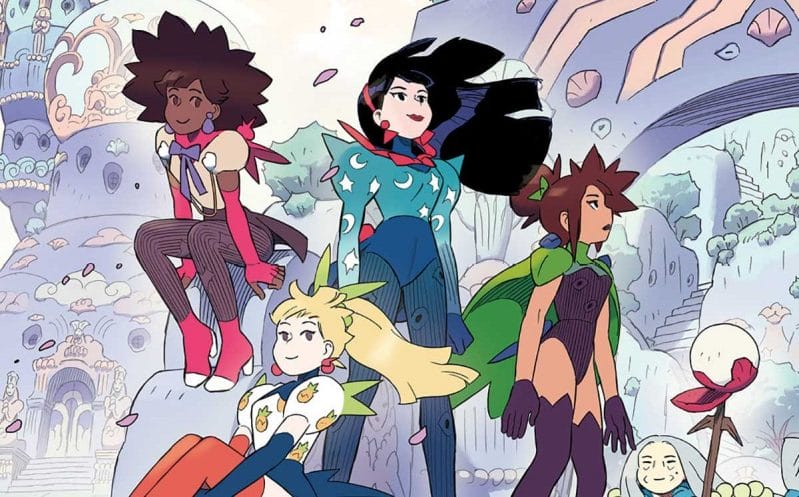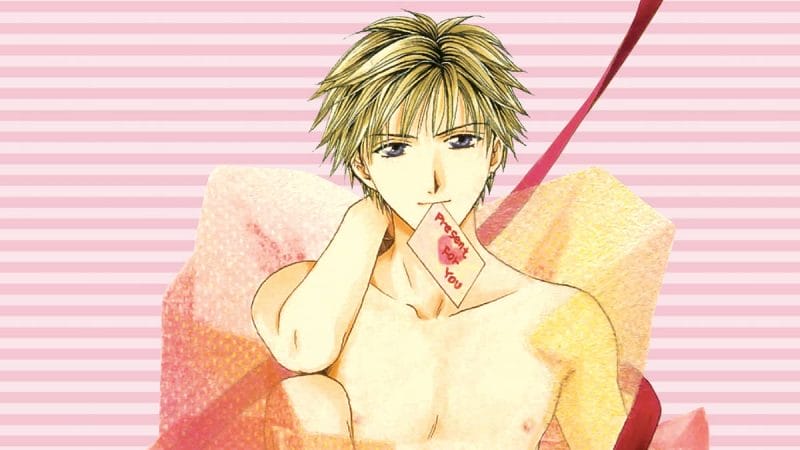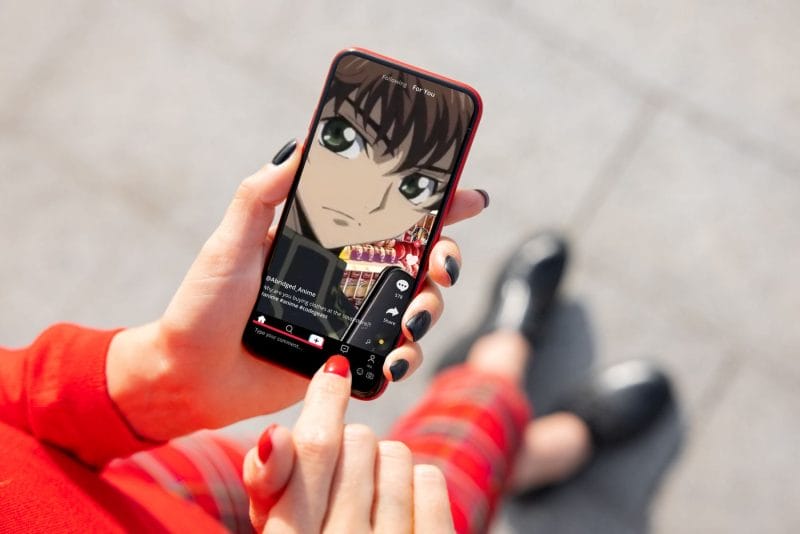Outsourced and In Demand
While anime fandom didn’t truly explode in the United States until the 1990s, future fans were getting their first taste of anime through extensively retooled shows like Voltron, Robotech, and Saber Rider and the Star Sheriffs. In addition to these some of the most popular shows of the era featured outsourced animation from some of Japan’s top studios. American kids were getting their first taste of anime. They just didn’t know it yet.
In the early 1980s, western television animation needed new life. Of the nineteen Saturday Morning cartoons that aired on network television in 1979 twelve were made by Hanna-Barbera Productions. Once an industry leader, known for their top-notch voice acting and making the best of limited animation Hanna-Barbera had become complacent. Shows like The All New Popeye Hour and Fred And Barney Meet The Schmoo were uninspired retreads of past success.
The era also produced truly bizarre shows, such as Casper and the Angels which was about Casper the Friendly Ghost assisting future cops in outer space and Yogi’s Space Race: an incomprehensible futuristic mash-up of Yogi Bear and Wacky Races. Hanna-Barbera also developed a nasty tendency of imitating their own most successful shows: Clue Club, Goober & The Ghost Chasers, and Buford & The Galloping Ghost were all shameless derivatives of Scooby-Doo.
But things were about to change. In 1981, Reagan appointed Mark S. Fowler as the new head of the FCC. Fowler had rather laissez-faire attitude towards television and undid most of the regulations in regard to advertising. This resulted in the rise of the paid programming that viewers know and loath is “infomercials.” He also undid federal guidelines regarding children’s television much to the dismay of parental activist groups like ACT (Action For Children’s Television.) This new environment would be something of a boon and a curse for cartoon studios. Outside of the big three networks animation producers would now have a new, almost unprecedented level of freedom however to cover the costs of producing a show independent studios would usually need to land a toy deal. Then you had shows that basically commissioned to serve as infomercials for toys.
1983 would prove to be a watershed year. Filmation’s He-Man & The Masters of the Universe smashed onto the scene and went on to be a major hit both on television and in toy aisles. Meanwhile, Sunbow’s G.I. Joe: A Real American Hero would also debut as a mini-series before becoming an ongoing series the following year. Both shows aired in syndication rendering them safe from the somewhat byzantine standard and practices of the major networks. On ABC. Batman wasn’t allowed wasn’t allowed to make a fist much less throw a punch on Superfriends but syndication was now an environment where anything went. It was such a wild west environment that there was even a short-lived wave of animated adaptations of R-rated movies like Rambo and Robocop.
Syndicated cartoons were nothing new but the success of He-Man and G.I. Joe led to a nigh unheard of demand for animated content – particularly for pulse pounding adventure romps aimed at young boys. Just a few years prior it would be unheard of for an unknown production company like World Event Productions or Harmony Gold to be on equal footing with Hanna-Barbera but thanks to this new environment “Voltron” and “Robotech” gave many Americans their first taste of anime.
In 1981 DiC collaborated with TMS Entertainment to create a series for French television called Ulysses 31 intended to be a science fiction re-imagining of Odysseus.. The fairly stunning show led to further co-productions including The Mysterious Cities of Gold, a collaboration with Studio Pierrot. A rolicking adventure series set in 1532 Mesoamerica. While the show would only enjoy a short in Japan it would be widely distributed throughout Europe. The show would be passed over in the US until 1986 when it was picked up by Nickelodeon and developed a healthy cult following. The show retained so much interest that in 2012 the show received a sequel series which picked right up where the original left off running for three seasons.
High off their success DiC would then attempt to bring one of TMS’s best known properties to a global stage. “Lupin VIII” was a science fiction take on “Lupin III” that attempted to sand-off the less than family friendly elements of Monkey Punch’s famously lecherous thief. In fact this future Lupin was not a thief at all but a detective that specialized in the recovery of stolen treasures. He was naturally aided by a descendent of Jigen, who much like American television detective Kojak had traded in his cigarettes for lollipops. Lupin purists might scoff but the Lupin VIII pilot was actually fairly promising. It featured a handful of thrilling moments including a chase with a giant robot shark, Jigen showing off his laser pistol marksman skills, and a grand entrance by a lightsaber-wielding Goemon. Alas the show never made it past the pilot stage as the estate of Maurice Leblanc (author of the original Arsene Lupin novels) threatened legal action. Work on the show was halted after the pilot had been animated but before a voice acting track could be recorded. The pilot would remain unseen for decades until it was included as a special feature in the Japan-Exclusive “Lupin III: The Master File” Blu-Ray set in 2012.
In the wake of the failure to launch Lupin VIII, DiC would instead approach TMS about creating an entirely new intellectual property. This new series would center on a bumbling robot detective aided by his clever niece and hapless dog. The show was “Inspector Gadget” and would go on to be a massive international success It ran for 86 episodes, and even had a healthy life in reruns into the early 2000s. The two companies would also team up to produce a string of hit shows including “Heathcliff and the Catillac Cat,” “The Littles,” and “The Real Ghostbusters.”
From this success TMS kickstarted the global reputation of being a top-notch television animation studio. When Disney made the jump to television a few years into the kid’s TV boom, TMS would be the first overseas production company that they would partner with. TMS would work on Adventures of the Gummie Bears, Ducktales, and Chip ‘n Dale Rescue Rangers. Disney would establish their own animation studio “Walt Disney Animation Japan“ which would pick up on Rescue Rangers where TMS left off. As for TMS anime studio would then jump ship to Warner Brothers in the 90s doing episodes of “Tiny Toon Adventures,” “Animaniacs,” and “Batman: The Animated Series.” While several oversees animation studios worked on these shows anytime TMS was brought in viewers knew they were in for a special treat. The studio would also do the direct-to-video movies “Tiny Toon Adventures: How I Spent My Vacation,” Animaniacs: Wakko’s Wish“ and “Batman Beyond Return of the Joker.”
TMS wasn’t the only anime studio doing overseas animation for western productions, either– not by a long shot. Sunrise dipped their toes into the water with “Jayce and the Wheeled Warriors,” and “The Centurions.” And Toei Animation would work on some of the biggest adventure shows of the era including “G.I. Joe,” “Transformers,” and “Muppet Babies.
Of course no conversation on the work of outsourced animation of that era is complete without discussing The Pacific Animation Corporation. Spinning out of the defunct Topcraft Limited Company the studio existed specifically to handle the overseas animation for Rankin/Bass. Rankin/Bass and PAC would create one of the biggest hits of the era with “Thundercats” which ran for a whopping 130 episodes. Their follow-up series “Silverhawks,” was a more modest success and ran for 65 episodes – the standard run of a successful syndicated series in that era.
Unfortunately, Rankin/Bass’s ambition would get the better of them in 1987, when they introduced “The Comic Strip” – a 90 minute block featuring four different shows. These were Mini-Monsters (A comedy series about tiny monsters at a summer camp,) “Karate Kat”(A cartoon cat who’s a detective/martial artist), Street Frogs (A musical series about a group of frogs aspiring to be hip-hop artists) and Tigersharks (an adventure series featuring humans whop morphed into aquatic heroes similar to “Thundercats” and “Silverhawks.”) Unfortunately, The Comic Strip’s new shows felt considerably weaker than Thundercats and Silverhawks and came out at a time when the syndication market was absolutely saturated. Despite being ordered for a full 65 episode run The Comic Strip failed to find any real traction in syndication and Rankin-Bass would be folded into Lorimar-Telepictures by the end of the year. Lorimar-Telepictures would then fold two years later. Eventually, The Pacific Animation Corporation would be purchased by Disney and became Walt Disney Animation Japan effectively taking TMS’s place as Disney’s Japanese partner – even starting work on the second season of Chip ‘n Dale Rescue Rangers. From out of this tumult Disney launched their own extremely successful programming block “The Disney Afternoon.” Placing the word “afternoon” on the block was actually a fairly brilliant piece of marketing by Disney. One of the caveats with syndicated television is that what programs aired in your part of the country varied wildly as well as what times they aired. By marketing it specifically as an afternoon block kids knew to tune in after they got home from school and stations were discouraged from giving it an undesirable early morning timeslot. It’s a perfect demonstration of Dinsey’s shrewd image control.
In the midst of this boom cycle there were a few shows that quietly walked the line between Western Animation and Anime. Shows created for the North American market with a lot more anime flair than one would usually see. Let’s talk about a few.
The Mighty Orbots (1984)
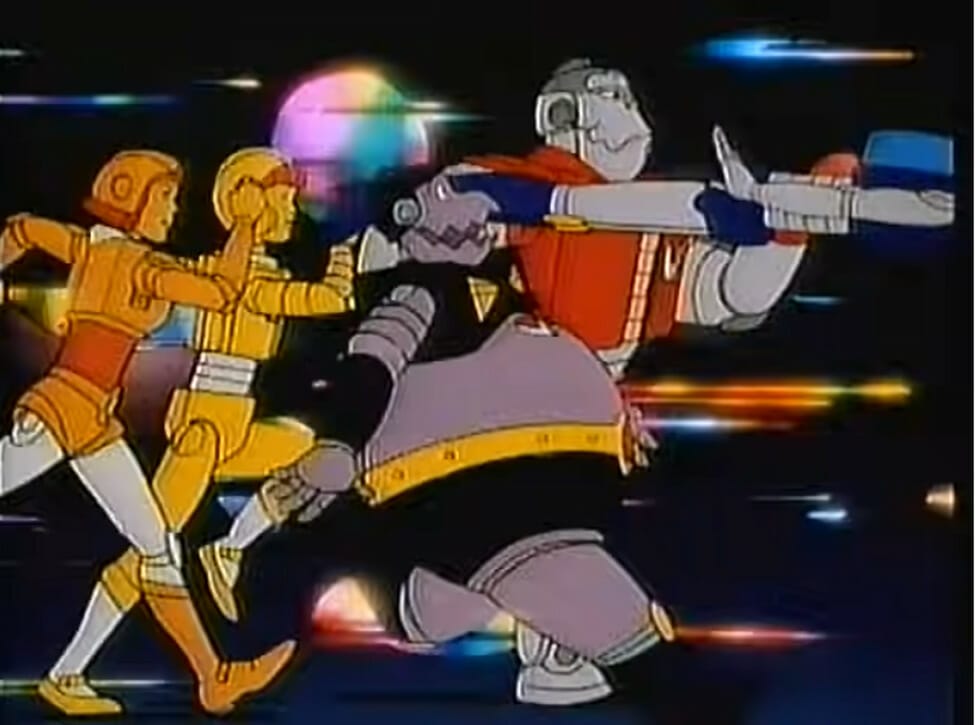
A joint venture between Japanese animation studio TMS and Fred Silverman’s Intermedia Entertainment “The Mighty Orbots” was a mecha series that premiered as part of ABC’s Saturday Morning line-up in 1984. The show was directed by veteran anime director Osamu Dezaki whose works include 1983’s “Golgo 13: The Professional” and numerous Lupin III specials. The show also featured character designs by Akio Sugino, animation by Shingo Araki, storyboards by Satoshi Dezaki, and music composed by Yuji Ohno.
As the show’s intro would explain “The Might Orbots” took place in “time of robots and aliens and a time of destruction and terror.” The titular Orbots were six humanoid sentient robots who with the aid of their human partner Rob Simmons could transform into a massive Mighty Orbot. The heroes would combat the evil forces of SHADOW which was led by a bio-computer named Umbra.
Mighty Orbots was certainly one of the best looking cartoons of its era but it was doomed by a lawsuit launched by Tonka claiming that the show was too similar to their own toy line Go-Bots. The show was also hampered by a particularly difficult time slot where it was aired opposite two of the decade’s most popular shows: “The Smurfs” and “Muppet Babies.” Despite only running for one season Orbots fans could take solace in that the show actually had a grand finale episode “The Invasion of the Shadow Star” in which the Mighty Orbots foil an attempt by Umbra to destroy Earth’s Sun and wind up destroying SHADOW once and for all. The show received a DVD release in 2018.
Galaxy High School (1986)
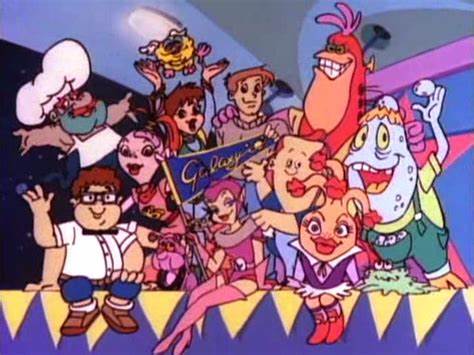
“Galaxy High School” is a fairly unique in that not only is a show created by TMS independently for American Television but it also developed by Chris Columbus (who wrote the pilot episode) the future director of such hits as “Adventures in Babysitting,” “Home Alone,” and “Harry Potter And the Sorcerer’s Stone.” The show’s theme song was written by Don Feldder of The Eagles. In Japan the show was directed by Saburo Hashimoto and Toshiyuki Hiruma with art direction by Hiroshi Ōno who also worked on “Kiki’s Delivery Service.” It aired Saturday mornings on CBS during the 1986/1987 season.
Galaxy High School was the story of two humans chosen to attend Galaxy High; a massive institution located on an asteroid named Flutor attended by all shapes and sizes of aliens. Upon arriving at the school the two humans suddenly find their life roles reversed from their experiences on earth. Cocky jock Doyle Cleverlobe is suddenly nothing special while bookish wallflower Aimee Brighttower fits in with her new human classmates far more easily than she did fellow humans becoming one of the most popular girls in school.
Galaxy High School was certainly an inventive series but it had the misfortune of being placed in an extremely difficult time slot airing opposite “The Smurfs” on NBC and “The Real Ghostbusters” on ABC. Midway through the season the show was moved to a later time slot however this resulted in the show sometimes being preempted by sports programming. Reruns of the show would be re-aired in Spring 1988. Alas it would be canceled after 13 episodes. In 1996 the show was optioned to be turned into a movie but this project ultimately never got off the ground.
Today, you can watch Galaxy High School for free on TMS’s Youtube Channel.
Bionic Six (1987)
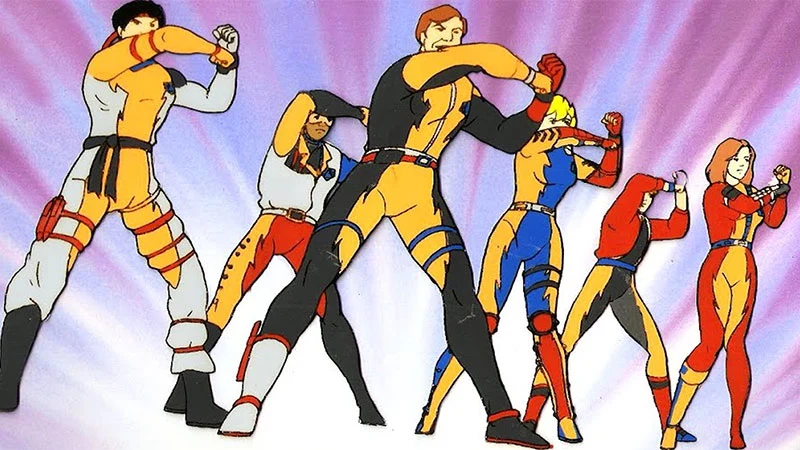
An action packed show about a superhero family Bionic Six is a show that feels ahead of its time. The kind of program that had it came out a few years later would have found a solid home on Fox Kids or Cartoon Network. On the American side of the pond you had creator Ron Friedman, a veteran television writer whose credits include Transformers: The Movie” and numerous arcs of the G.I. Joe: A Real American Hero. On the Japanese end for TMS was series director Osamu Dezaki who had previously directed “Space Adventure Cobra,” “Golgo 13: The Professional,” and “The Mighty Orbots.” The show also had a murderer’s row of the era’s most recognizable voice acting talent including John Stephenson (G.I. Joe), Samantha Paris (Jem,) Alan Openheimer (He: Man & The Masters of the Universe,) Jennifer Darling (Teenage Mutant Ninja Turtles), and Frank Welker (Scooby-Doo.) The theme song was by Steve Rucker and Thomas Chase.
The series followed the adventures of the super-powered Bennett family, their mentor Amadeus Sharp and robot gorilla F.L.U.F.F.I. as they thwart the plans of the nefarious Dr. Scarab and his minions. The family would travel the world while trying to maintain their secret identities and balance their civilian lives. Scarab (voiced by Jim Mac George doing an impression of George C. Scott) had many evil schemes ranging from cloning himself, to hijacking a meteor, to turning a theme park’s robots into soldiers.
While a quality show Bionic Six came out during a time when the American syndication market was absolutely saturated competing against Ducktales, The Real Ghostbusters, The Comic Strip, and Dinosaucers. The show would run 65 episodes which was the standard run for a successful syndicated animated series for the day. It would also be rerun on the SyFy Channel’s Cartoon Quest block from 1995 until 1997. Sadly there has never been an official home release and the show is not officially streaming.
The last episode of “Bionic Six” entitled “That’s All Folks” is notable as it sees the team transported into a world full of funny animals that functioned on Loony Toons logic. Upon arriving the group find themselves drawn in a completely different art style and have to learn cartoon comedy tropes in order to get home. The cartoon dimension’s creator is a retired cartoonist “Flub Flemming” whose name is a nod to Friz Freleng the longtime Looney Tunes director who helped create Porky Pig, Tweety Bird, and Speedy Gonzales. Because of the change in art style and fairly dead-on reference to animation history it can be speculated that this episode was a trial run for TMS’s later work for Warner Brothers on “Tiny Toon Adventures” and “Animaniacs.”
Changing Times
While anime studios like TMS and in-house Japanese studios like Walt Disney Animation Japan would continue to work on top shows throughout the 90s over the course of the decade we would see a decline of American/Japanese collaborations. Other foreign studios like Hong Kong based “Wang Film Productions” and South Korea’s “Sunwoo Entertainment” would prove to be more affordable. The syndicated cartoon blocks that were so lucrative in the ‘80s would begin to disappear. In 1991 Fox added its own weekday afternoon programming and many stations dropped The Disney Afternoon and other syndicated cartoons. In 1995 the WB network was formed and would also add its own in-house afternoon programming block. Furthermore in the mid-90s daytime talk shows began to explode in popularity. There were significantly fewer places for syndicated cartoons to air and by the end of the ‘96-’97 season Disney pulled the plug on their once dominant Disney Afternoon block. Kids started to get their cartoon fix from Cartoon Network and Nickelodeon. Limited animation also would start making a comeback thanks to stylized shows like Dexter’s Laboratory and “The Powerpuff Girls.”
However ultimately what ended these co-productions might be the popularity of anime itself. Why gamble creating an expensive show from scratch when it’s much cheaper to localize an already successful show? That was Jaime Kellner’s reasoning when he retooled Kids’ WB in the late 90s transitioning away from shows like “Animaniacs” to building a programming block around “Pokemon.” Still these international shows left an indelible mark on those who watched it and the animation medium as a whole.
For a long time ‘80s television animation had a not-entirely undeserved reputation of being a wasteland full of cynically conceived shows that were simply made to advertise toys. In recent years nostalgic Generation X and younger Millennials have come to look at the era through rose colored glasses viewing it as something of a golden age. The truth is somewhere in between. While many of the shows from that era were created with purely mercenary intentions there still was creativity and innovation at work. It could be argued that shows like “Galaxy High” and “Bionic Six” walked so “Tiny Toon Adventures” and “Batman: The Animated Series” could run.





